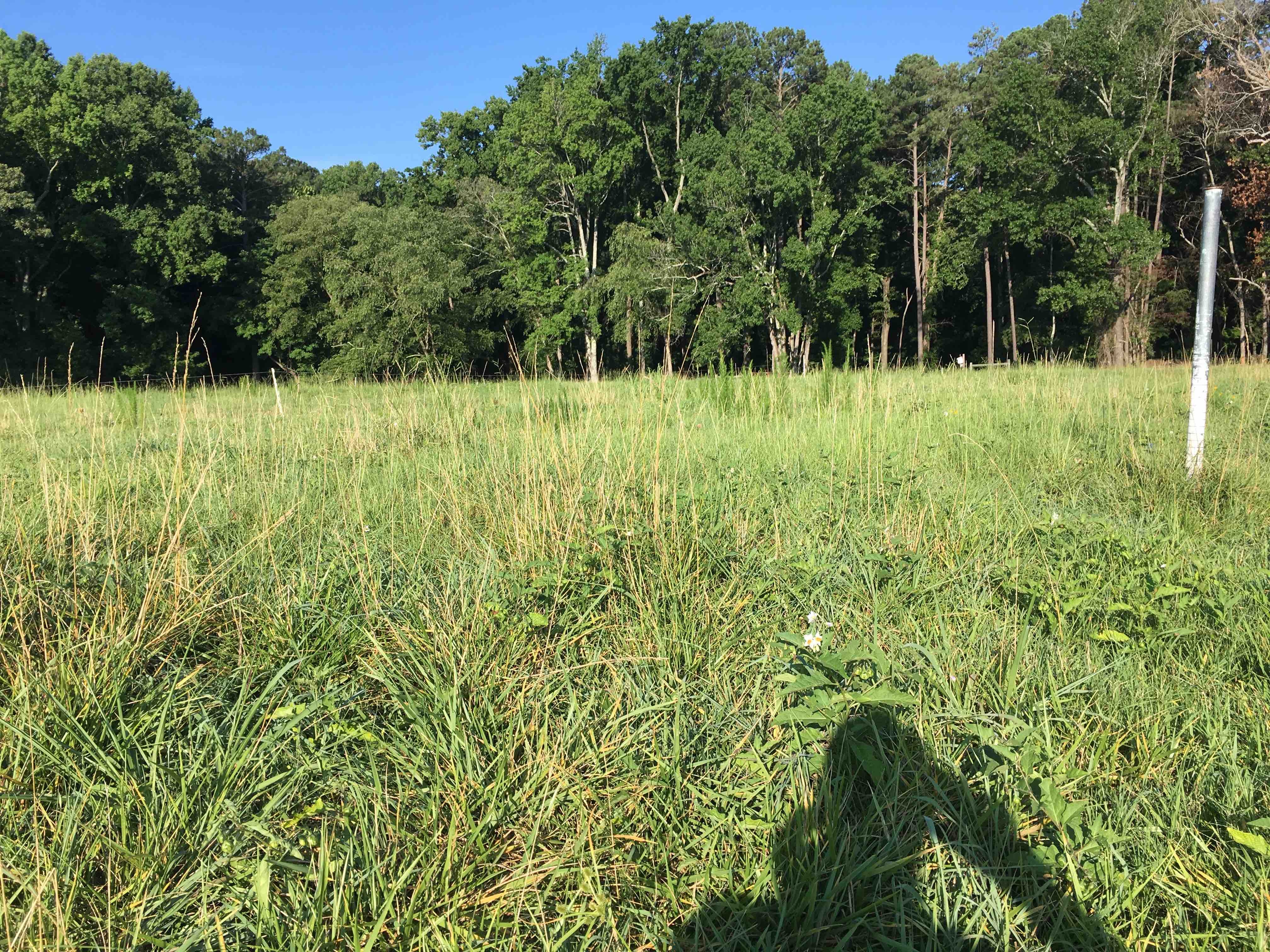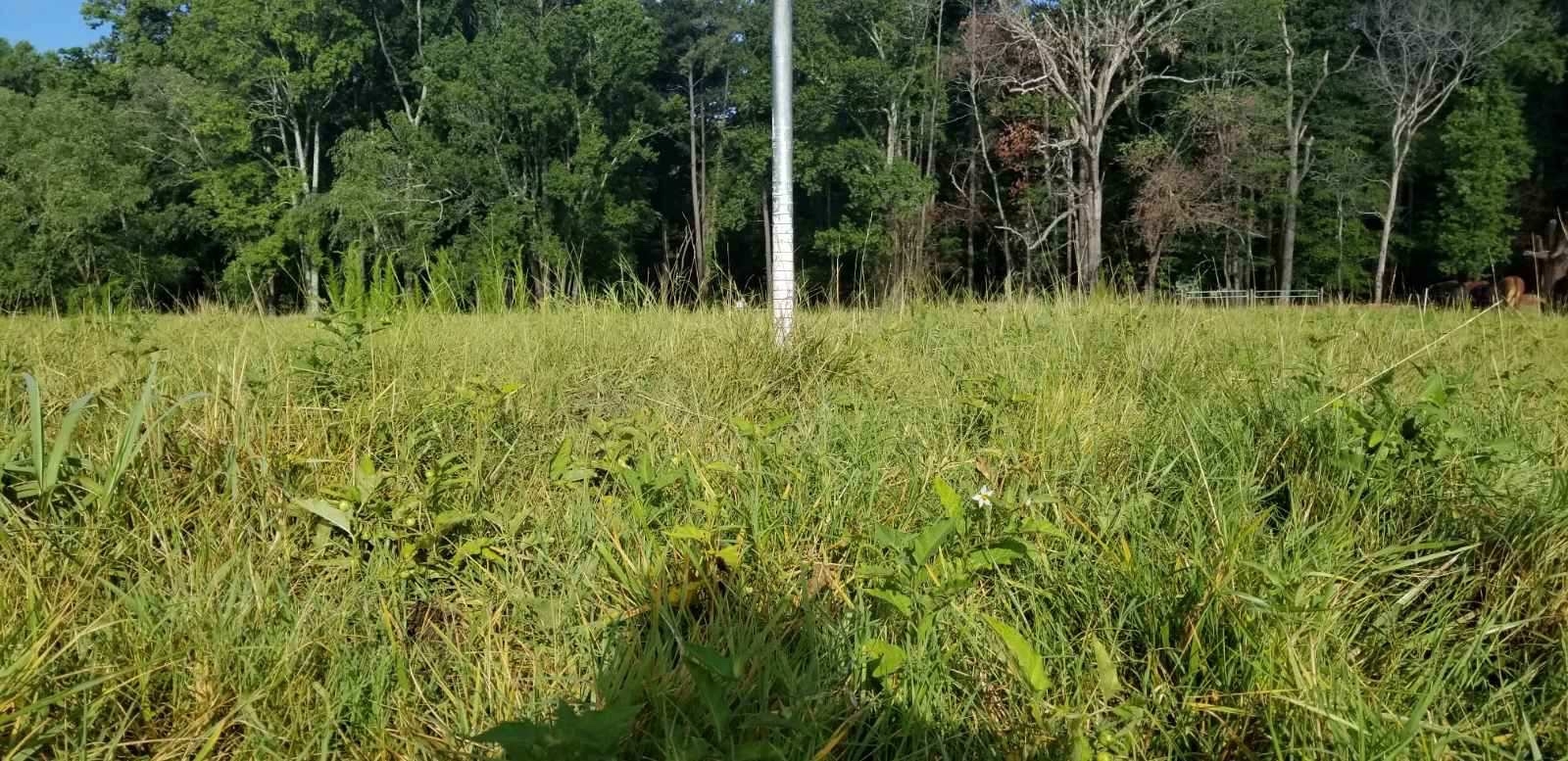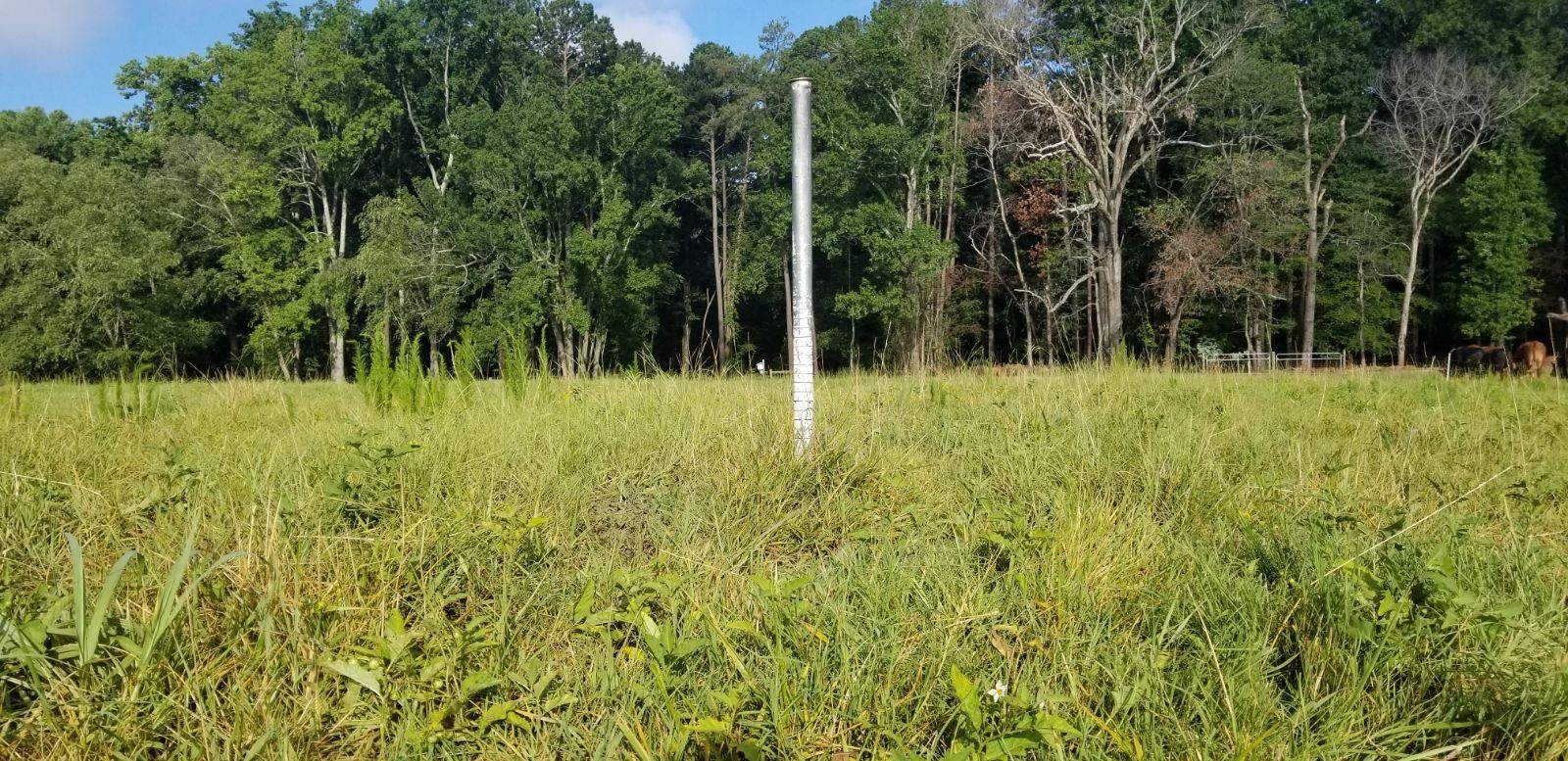This year marks the last year of our NRCS grazing monitoring program. This has been an excellent program where all we needed to do was to take before and after pictures of our grazing in strategic locations at least once per year. We then documented the grass growth and then consumption. When all the work is done properly, we get a check at the end of the year. Easy peasy.
So for the pasture closest to the golf course, here is the last grazing update.

Normally by this time of year we are dealing with hot and dry weather. And we do have hot, but we had some timely wet weather just before this week. The grass was vibrant and lush. The cool season grasses have just about gone dormant and the thick, warm season grasses are enjoying the combination of unlimited sun and some water when it is needed. The grass is anywhere from 10″ to 15″ tall and very thick.
We are only grazing about 14 cows on rotation right now. The rest are at our other farm. This particular paddock, due to leaving a gap for the pigs to be fed in the paddock system, was to be grazed two days.

Johnson grass is popping up across the pasture as well. You can see some in the right of the picture (the patch of taller than normal grass). It never seems to be in the same place, but the cows absolutely love it and eat it immediately to the ground. Johnson grass is the bane of many row crop farmers but I love that it grows in our pastures, because our cows love it.

The grass is definitely showing signs of having been grazing, but it is still 5-6″ tall and very thick. This is perfect for regrowth and for building topsoil. Also much of the brown stems from the cool season grass that has gone dormant is now broken off and therefore pressed down to the ground. Grass litter in contact with the ground is what makes topsoil. So we’ve fed our cows, and fed our soil, all at the same time.

After this picture, we pulled up this grazing stake getting a steel pole out of the middle of the pasture and marking the end of our NRCS program for this pasture. This allows us to mow easier, and it also allows us to get ready for our next usage of the pasture next year.